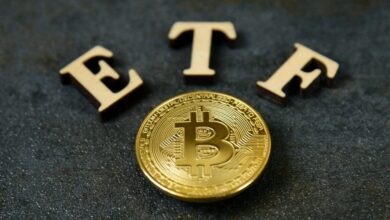
Bitcoin Trades Enthusiastically as Evidence Suggests Range Growth
Bitcoin Trades Enthusiastically. On June 3, the price of Bitcoin BTC resumed its downward trend and is currently trading at $57,561, 20% below its all-time high of $73,835. Although the market is now experiencing “apathy and boredom,” as shown by the price action, research from Glassnode suggests that Bitcoin is preparing for a “larger move” soon based on on-chain indicators.
Bitcoin Investor Profitability Remains “Remarkably Robust”
The flagship cryptocurrency’s price, Bitcoin, has been on a tear thus far in 2024, reaching a new all-time high on March 5. As a result, “fear and bearish” feelings and indifference set in as Bitcoin corrected, falling below the $60,000 barrier three times in the past ten days. According to market intelligence firm Glassnode, a large percentage of Bitcoin investors are still making money using the Market Value Realized Value (MVRV) metric.
The typical coin still has a two-time profit multiple, as seen in the figure below, which indicates that the aggregate investor profitability is surprisingly large. Thilevelat often delineates the ‘Enthusiastic’ and the ‘Euphoric’ bull market phases,” stated Glassnode. According to Glassnode, the accumulation of Bitcoin between $60,000 and $70,000 since Mare has caused the market to lack a strong trend in either direction and has caused widespread indecision.
Bitcoin Trades Enthusiastically: The data aggregator claims that a situation indicates an “enthusiastic bull market” when the spot price fluctuates between the all-time high and the True Market Mean. The True Market Mean, which represents the average cost basis per active investor, is valued at $50,000, as shown in the chart below. “Recently, following brief forays into the euphoric zone, prices remain firmly within the enthusiastic bull regime.” According to Glassnode, “if the macro bull market is expected to continue,” Bitcoin must maintain a price above $50,000According to new research from 10X Research,
Bitcoin will quickly fall to lower support levels, maybe hitting $50,0ch, unless it can maintain a price above $60,000. If Bitcoin’s price were to breach the 60,000 mark, it would have a negative psychological impact since it might cause a steep decline to the next support level, which could be $55,000 or $50,000.
Compressing Volatility Signals ‘Large Market Moves Ahead’
Glassnode experts observed a decrease in volatility over various time frames after the price action, which had been range-bound for several months. The Realized Volatility of Bitcoin displays a negative 30-day change across all timeframes, including one week, two weeks, one month, three months, six months, and one year from now.
According to the paper, when this occurs, “a signal is triggered, inferring that volatility is compressing, and so are investor expectations of lower volatility ahead.” Bitcoin Trades Enthusiastically: In the context of Bitcoin price performance, a period characterized by a decrease in historical volatility or fluctuation is referred to as volatility compression. When this occurs, it is frequently followed by a substantial shift in the market, either higher or lower.
Gassnode’s analysis of the percentage range between the highest and lowest price tick-overs over the past sixty days revealed that the Bitcoin market’s volatility continues to “compress to levels that are rarely seen.” If this compression occurs after such extended periods of consolidation, it typically indicates that the price is getting ready for more significant market movements.
Bottom Line
Regarding the Sell-Side Risk Ratio, the analysts evaluated the total realized profit and loss locked in by investors about the asset size, referred to as the Realized Cap. They discovered that this indicator has decreased to levels that have never been seen before. In light of this, it appears that a certain level of equilibrium has been reached during this period of price consolidation, and it also signals that there will be increased volatility expectations in the not-too-distant future. This indicates that the current trading range is in the “later stages of developing toward the next range expansion.







